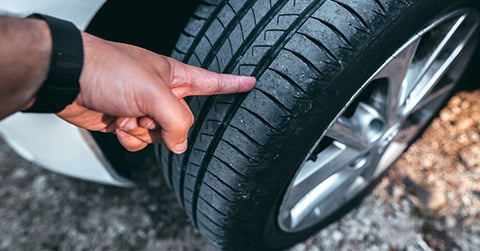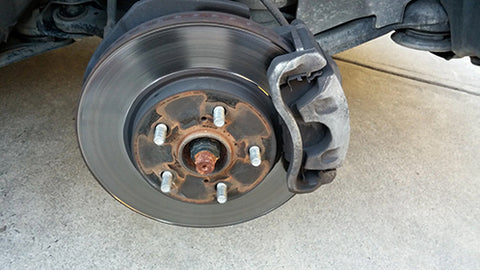Comprehensive Guide to Maintaining Your Car's Tyres and Brakes
Posted by Hunt Parts on
Proper maintenance of these critical parts is not only vital for your safety but also for maximizing the lifespan of your car. In this blog, we will provide you with a comprehensive guide on how to maintain your car's tyres and brakes effectively. By following these tips, you can ensure a smooth and safe driving experience.
Regular Inspection:

Proper Inflation:

Tread Depth:
The depth of your tyre's tread is essential for proper traction on the road. Use a tread depth gauge to measure the tread depth. The legal minimum tread depth varies by country, but it is generally recommended to have at least 1.6mm. If the tread depth is below the recommended level, consider replacing your tyres as they may compromise your safety.
Wheel Alignment and Balancing:
Improper wheel alignment and unbalanced wheels can lead to uneven tyre wear and affect the handling of your vehicle. Get your wheels aligned and balanced by a professional periodically or whenever you notice signs of vibration or pulling to one side while driving.
Rotation:
Tyre rotation helps to distribute wear evenly among all tyres. Front tyres tend to wear faster than the rear ones due to steering and braking forces. Refer to the vehicle manufacturer's guidelines for the recommended rotation pattern and interval. Regular rotation can extend the life of your tyres.
Brake Maintenance
Brake Fluid:
Brake fluid plays a crucial role in the proper functioning of your car's braking system. Check the brake fluid level regularly and top it up if necessary. If the fluid appears dark or contaminated, it may be time for a brake fluid flush and replacement. Consult your vehicle's manual or a professional mechanic for guidance.
Brake Pads and Rotors:

Inspect your brake pads through the wheel spokes to check their thickness. Most brake pads have wear indicators that make a screeching noise when they are worn down. If the pads are worn beyond the recommended limit, replace them immediately. Also, check the condition of the brake rotors for any signs of scoring or excessive wear.
Smooth Braking:
Avoid sudden and aggressive braking whenever possible. Gradual braking helps to minimize unnecessary wear on the brake pads and rotors. Also, be mindful of your driving habits and adjust accordingly to preserve the life of your brakes.
Parking Brake:
Periodically engage your parking brake to ensure it remains in good working condition. Apply and release it several times to prevent it from seizing. If you notice any issues, have it inspected and repaired promptly.
Professional Inspection:
Regularly schedule comprehensive brake inspections by a qualified mechanic. They have the expertise to identify potential brake problems and address them before they escalate. A thorough inspection may include checking the brake lines, calipers, and other components.
Conclusion:
Maintaining your car's tyres and brakes is essential for your safety and
